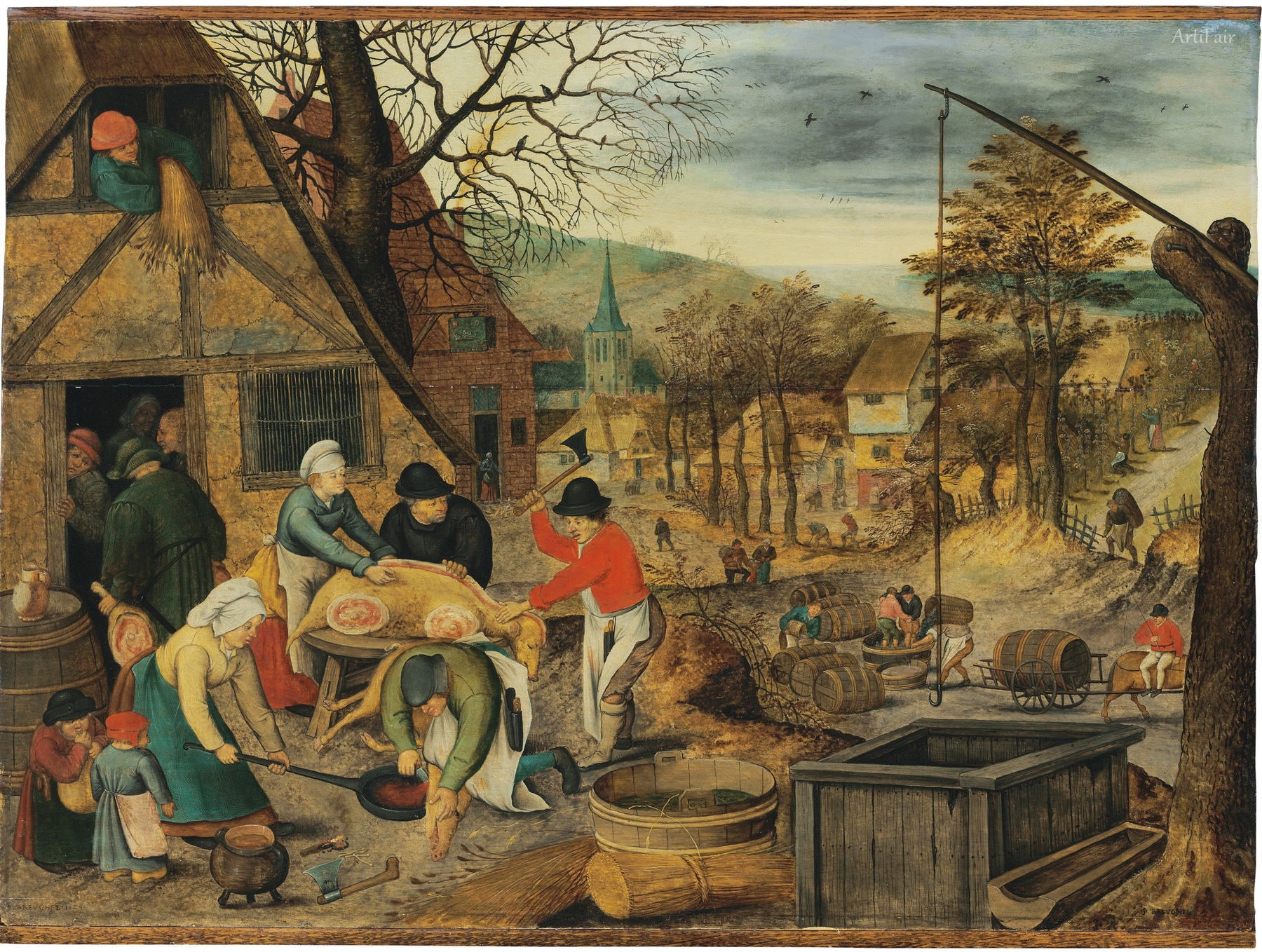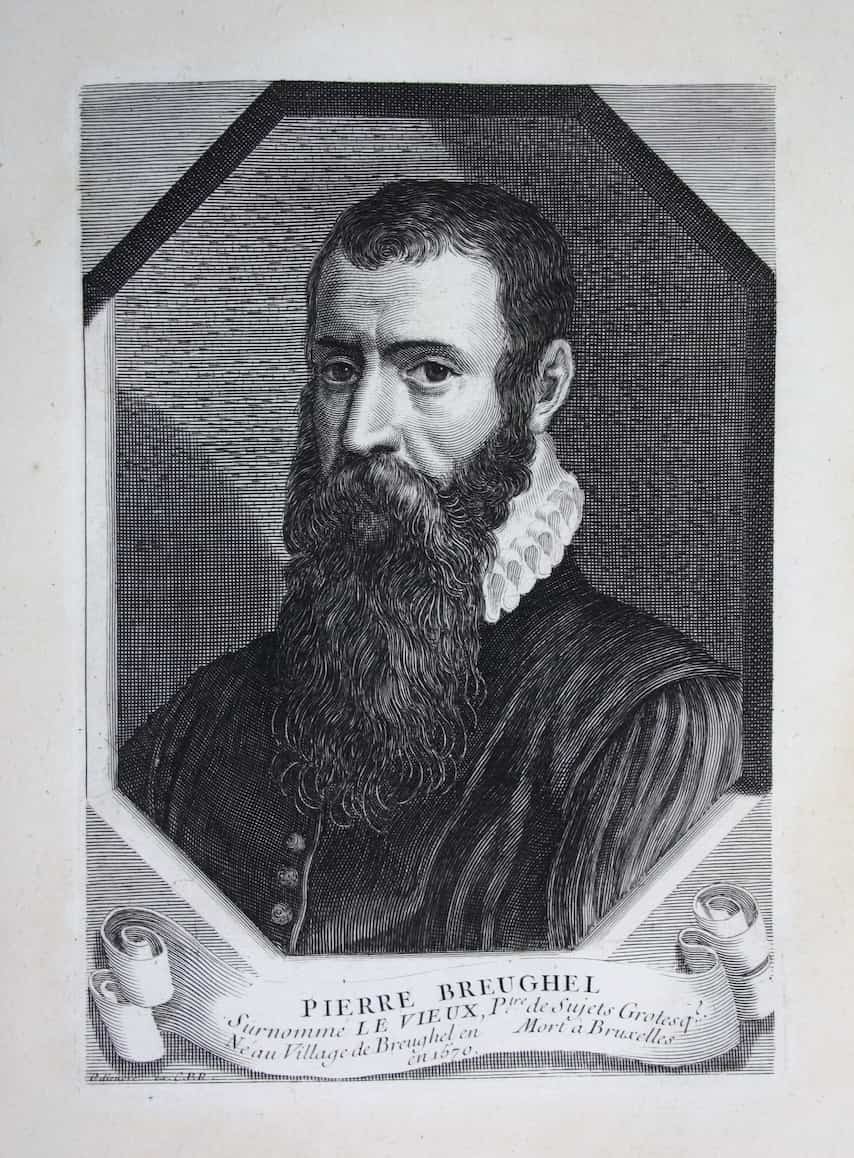

Pieter Bruegel the Elder
BE
84
Artworks
1525 - 1569
Lifespan
Artist Biography
Pieter Bruegel the Elder (c. 1525–1569) stands as the most significant artist of the Dutch and Flemish Renaissance, a master painter and printmaker whose work profoundly shaped the course of Northern European art. Born near Breda in the Duchy of Brabant, his early life remains enigmatic. He trained in Antwerp under Pieter Coecke van Aelst and was admitted as a master into the painters' Guild of Saint Luke in 1551. Bruegel’s work is celebrated for its panoramic landscapes and vigorous, insightful scenes of peasant life, establishing him as a pioneer of genre painting and the patriarch of a multi-generational artistic dynasty.
Shortly after becoming a master, Bruegel embarked on a transformative journey to Italy, traveling as far as Sicily. While he largely resisted the influence of Italian High Renaissance art, the experience of crossing the Alps left an indelible mark on his artistic vision. Upon his return to Antwerp around 1555, he began a fruitful collaboration with the publisher Hieronymus Cock, producing over forty designs for prints. These early works, filled with moralizing allegories and fantastical elements reminiscent of Hieronymus Bosch, earned him the title of a "second Bosch" and quickly established his fame across Europe. Prints like "Big Fish Eat Little Fish" showcased his inventive wit and critical eye.
Around 1557, Bruegel shifted his focus to painting, developing a distinctive style that elevated scenes of everyday life to monumental artistic statements. His depictions of village festivities, children's games, and local proverbs earned him the misleading nickname "Peasant Bruegel." Far from being a simple chronicler of rural life, Bruegel was a sophisticated and educated artist who moved in humanist circles, counting the cartographer Abraham Ortelius among his friends and prominent collectors like Niclaes Jonghelinck among his patrons. Works such as "Netherlandish Proverbs" and "Children's Games" are not mere observations but complex, masterfully composed allegories on the human condition.
Bruegel’s greatest innovation perhaps lies in his treatment of landscape. He was among the first to portray the natural world not merely as a backdrop for religious or mythological events, but as the primary subject, imbued with its own power and atmospheric grandeur. His 1565 series depicting the seasons, commissioned for the Antwerp home of Niclaes Jonghelinck, represents the apex of this achievement. The five surviving paintings, including the iconic "Hunters in the Snow," "The Harvesters," and "The Gloomy Day," transcend traditional calendar scenes to offer a profound and universal vision of the world's cyclical rhythms and man's place within it.
In 1563, Bruegel moved to Brussels, married Mayken Coecke, and dedicated his final years almost exclusively to painting. During this period, his style evolved toward compositions with fewer, more monumental figures, lending them a new sense of gravity and psychological depth. Masterpieces like "The Peasant Wedding" and the starkly powerful "The Blind Leading the Blind" exemplify this late style. He continued to paint religious subjects, but often subverted convention by embedding the sacred narrative within a vast, contemporary Flemish landscape, as seen in "The Procession to Calvary," thus reflecting on the turbulent religious and political climate of the Habsburg Netherlands.
At his early death in 1569, Bruegel left behind an artistic legacy of immense influence. Though his sons, Pieter the Younger and Jan the Elder, were too young to be trained by him, they carried his name and style forward, ensuring his fame for generations. Bruegel’s focus on the common person, his revolutionary approach to landscape, and his all-encompassing, often witty, view of humanity profoundly influenced the Dutch Golden Age and secured his place as one of art history's most original and insightful masters.